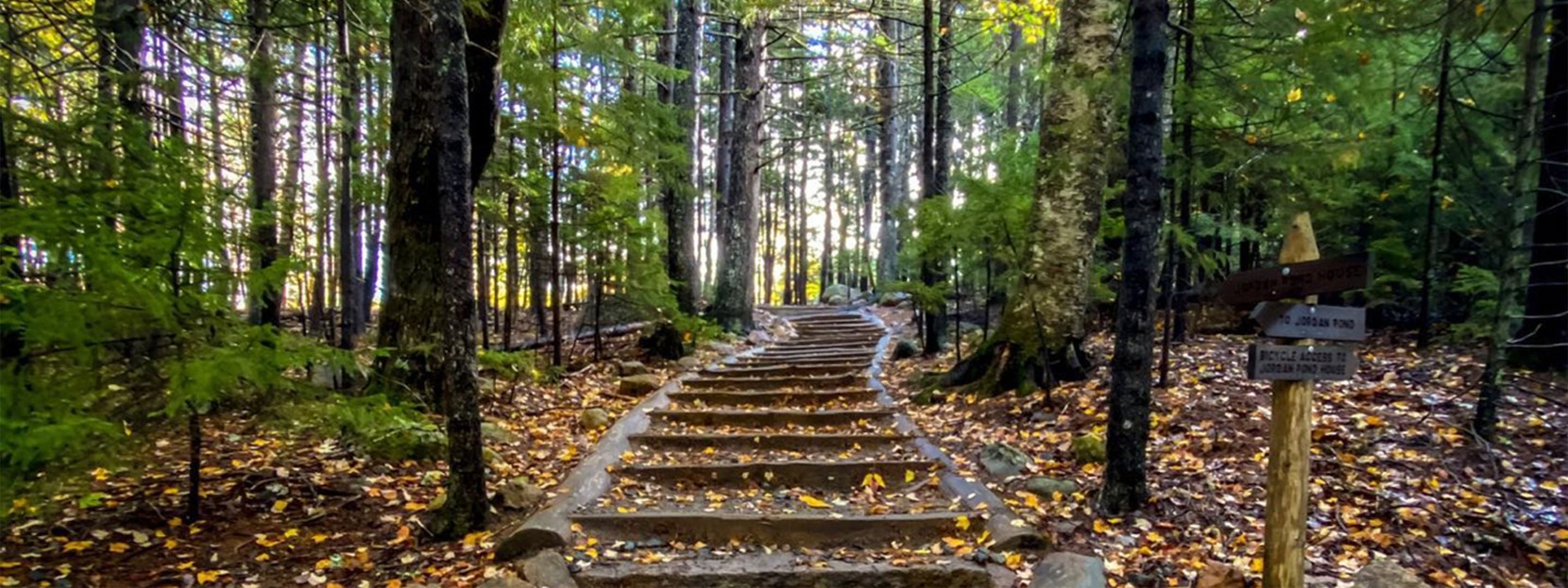
Our company started in the forests of Maine, where Leon Leonwood Bean came up with the idea for a better hunting boot. As we’ve expanded beyond the borders of Maine, our message has especially resonated in Japan, where we’ve been helping customers get outside since we opened our first Tokyo retail store in 1992.
No matter where we are, a love of the outdoors brings us all together. And that universal feeling of connection we experience when we take a walk in the woods is at the heart of the Japanese practice of shinrin-yoku.
What is shinrin-yoku?
Shinrin-yoku translates as “forest bathing,” and the evocative name describes the practice perfectly – like immersing yourself in a soothing and relaxing bath, you immerse yourself in a soothing and relaxing forest. Instead of soaking in the warm water, you soak in the sights, sounds and smells of nature. And that time outside has a positive, restorative effect on your health and wellbeing.
Nearly 40 years ago, the Japanese Ministry of Agriculture, Forestry and Fisheries proposed incorporating shinrin-yoku into daily life, and began designating national forest bathing reserves. Today, the Japanese Society of Forest Medicine continues to promote research on forest medicine and the benefits of forest bathing.
What’s the science behind shinrin-yoku?
We know that time outside has numerous health benefits, for both body and mind. A study in the journal Psychological Science, for example, found that just an hour spent walking in nature improved attention span and memory by 20%. And the benefits of forest bathing in particular – those immersive, meditative walks in nature – are becoming clear as well.
In Japan, a study in the International Journal of Biometeorology found that forest bathing reduced the blood glucose levels of diabetics by 39.7%, more than with indoor exercise. The same study also discovered that certain forest trees emit organic compounds called phytoncides, and inhaling these compounds has been proven to decrease blood pressure and improve immune system functions.
In light of these findings, the Japanese government has developed 48 therapy trails throughout the country. It’s a way of helping provide access to everyone who wants to experience the healing benefits of time outside.
How do you practice shrinrin-yoku?
One of the wonderful things about forest bathing is that it’s incredibly easy. You don’t need any special training or gear – in fact, you don’t even need a forest! The practice is all about opening your senses, leaving your worries behind and connecting with nature, whether that’s a forest trail, a city park or your own backyard.
When you’re outside, start by pausing, taking a deep breath and focusing on the sensations around you. What do you see, smell, hear, taste and feel? Don’t rush through the experience – really explore what your five senses are telling you. Walk at a leisurely pace, with no destination or real goal. Let your body guide you. And keep your phone in your pocket – or better yet, leave it behind. The more you concentrate on what’s around you, the more fully you’ll feel the mental clarity and physical restoration that forest bathing brings.
You don’t have to be in the remote woods of Maine, the forests of Japan or some other remote location to practice shinrin-yoku – you just have to head outside!


